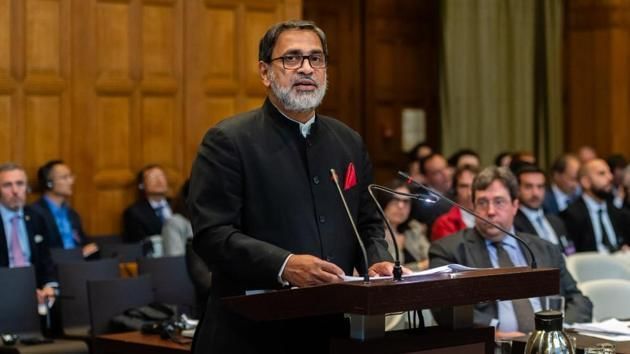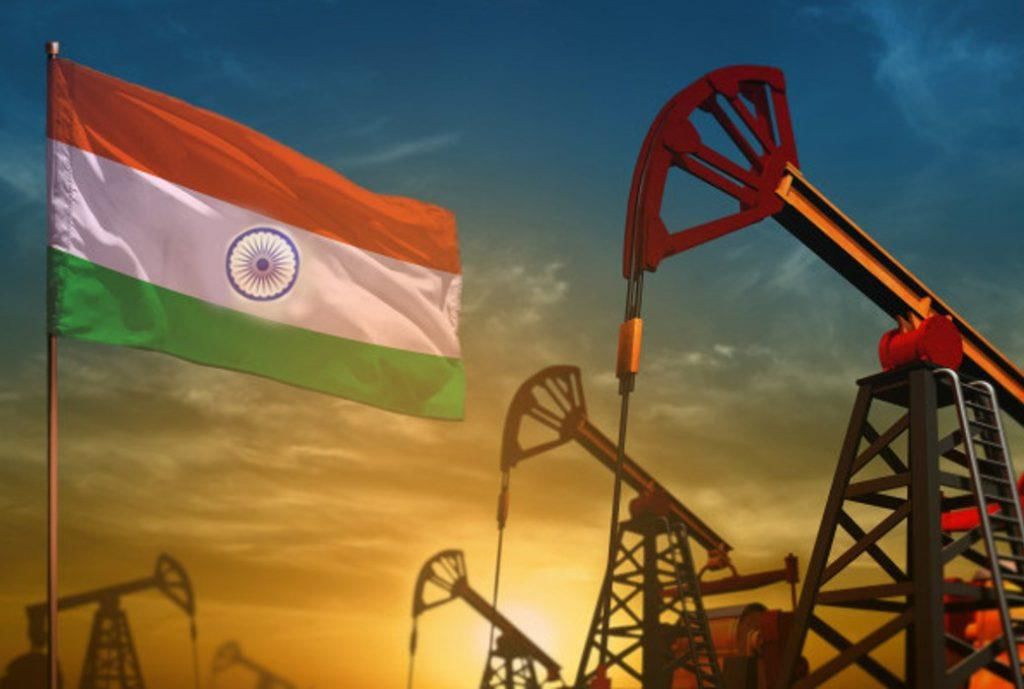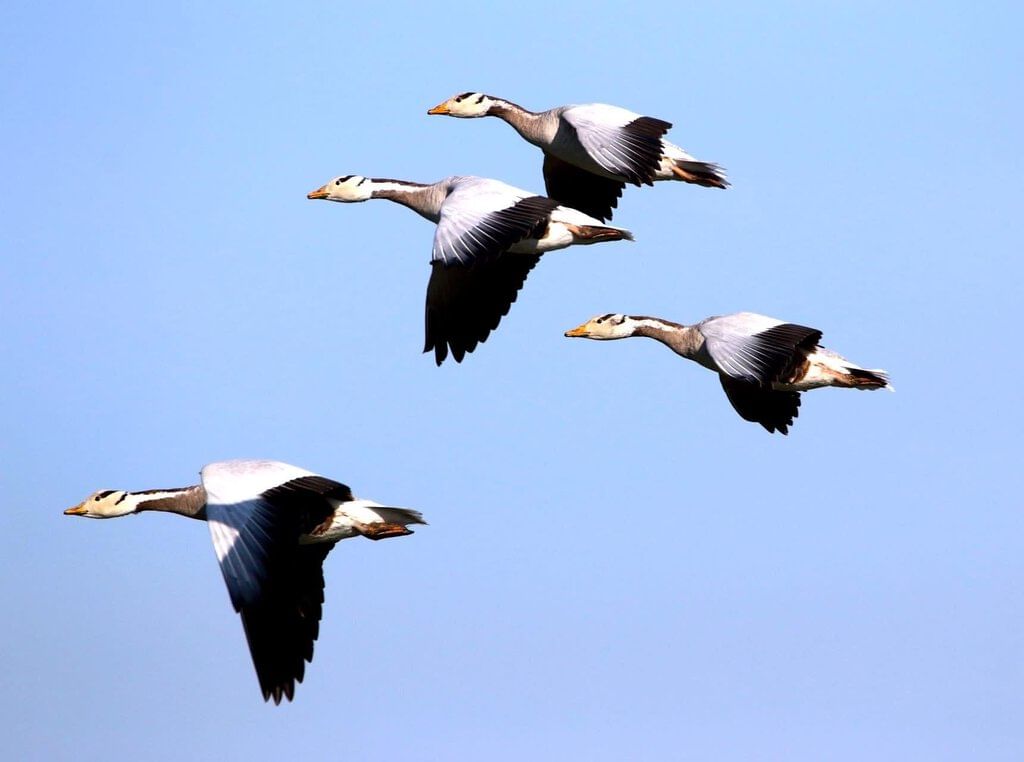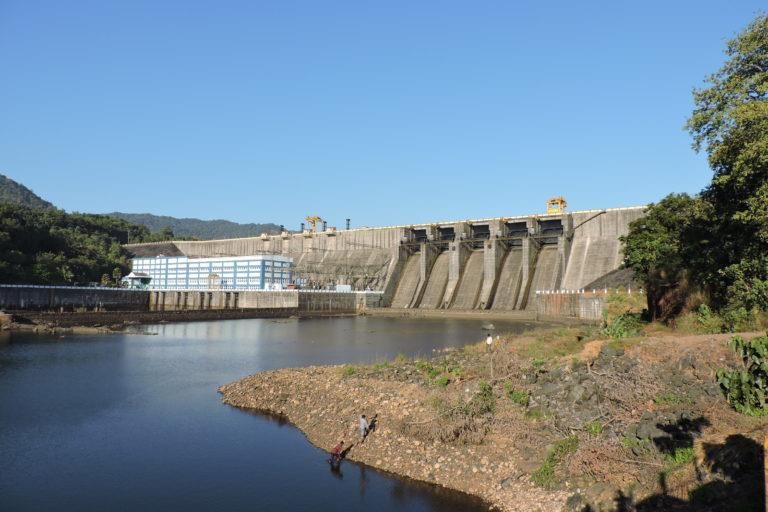UPSC Daily Current Affairs: 9th March 2025 | Current Affairs & Hindu Analysis: Daily, Weekly & Monthly PDF Download
GS3/Science and Technology
Hantavirus Pulmonary Syndrome (HPS)
Why in News?
Recently, the tragic deaths of Oscar-winning actor Gene Hackman and his wife Betsy Arakawa have drawn attention to Hantavirus Pulmonary Syndrome (HPS), which is a serious infectious disease caused by hantaviruses.
- HPS is a rare infectious disease that begins with flu-like symptoms.
- It can lead to severe respiratory and heart complications.
- The disease is also referred to as hantavirus cardiopulmonary syndrome.
- Transmission primarily occurs through contact with rodents, not from person to person.
Additional Details
- Transmission: Hantaviruses are mainly spread by rodents, such as rats and mice, through inhalation of particles from their urine, droppings, or saliva. Though uncommon, transmission can also occur through bites or scratches from infected rodents.
- Symptoms: Initial symptoms include fatigue, fever, and muscle aches, which may progress to headaches, dizziness, chills, and abdominal issues. If respiratory symptoms emerge, the mortality rate can be as high as 38%.
- Treatment: There is no specific treatment for hantavirus infections. However, seeking early medical attention can be crucial if the disease progresses to severe forms.
Understanding Hantavirus Pulmonary Syndrome is essential for recognizing its symptoms and seeking timely medical care, especially in light of its potential severity.
GS2/International Relations
India Supports Mauritius’ Claims Over Chagos Archipelago
 Why in News?
Why in News?
Prime Minister Narendra Modi is scheduled to visit Mauritius from March 11-12, 2025, where he will serve as the chief guest at the national day celebrations of the country. During this visit, Foreign Secretary Vikram Misri reaffirmed India’s support for Mauritius’ claims over the Chagos Archipelago, highlighting India’s ongoing commitment to the process of decolonization.
- Prime Minister Modi's visit coincides with significant diplomatic discussions on the Chagos Archipelago.
- India emphasizes its support for Mauritius amidst ongoing sovereignty negotiations regarding the archipelago.
- The visit also underscores the importance of India-Mauritius relations in the context of regional stability and cooperation.
Additional Details
- Chagos Archipelago: This group consists of seven atolls and over 60 islands located in the Indian Ocean, approximately 500 kilometers south of the Maldives. It is part of the Chagos-Laccadive Ridge, a prominent submarine mountain range in the Indian Ocean.
- Historically, from 1715 to 1810, the Chagos Islands were part of French possessions in the Indian Ocean. Following the Treaty of Paris in 1814, France ceded the islands to the United Kingdom, which then established a sugar-producing colony there until Mauritius gained independence in 1968.
- In 1965, the UK detached the Chagos Archipelago from Mauritius to create the British Indian Ocean Territory (BIOT), with Diego Garcia being utilized as a significant UK-U.S. military base since the 1970s.
- Recent political agreements signify a shift, with the UK and the US acknowledging Mauritius' sovereignty over most of the Chagos Islands, while maintaining military presence at Diego Garcia.
The upcoming visit by PM Modi to Mauritius is expected to strengthen bilateral ties and is essential for India’s foreign policy, particularly regarding decolonization efforts and supporting Mauritius in its claim over the Chagos Archipelago.
GS2/International Relations
India Promises to Buy More U.S. Oil
 Why in News?
Why in News?
India is set to increase its oil and natural gas imports from the United States following a meeting between Prime Minister Modi and President Trump in February. Indian officials have indicated that energy purchases could rise significantly, from $15 billion to $25 billion. A recent report from Reuters highlighted that U.S. crude exports to India reached 357,000 barrels per day in February, a rise from 221,000 bpd in the previous year.
- India is the world's third-largest oil importer and aims to strengthen energy ties with the U.S.
- This agreement is part of a broader strategy to secure hydrocarbon supplies critical for India's 85% import-dependent crude oil needs.
- Efforts are underway to double U.S.-India bilateral trade to $500 billion over the next five years.
Additional Details
- Boost to Bilateral Trade: Currently, trade dynamics favor India, with a $45.7 billion goods trade surplus in 2024, marking a 5.4% increase from 2023.
- Diversifying Energy Sources: Experts believe that increasing U.S. energy imports will enhance India's supply diversity and bolster long-term energy security.
- India aims to position the U.S. as a primary supplier of crude oil, petroleum products, and liquefied natural gas (LNG).
- Strengthening Hydrocarbon Trade and Investments: Both nations have committed to enhancing trade in hydrocarbons, including ethane and petroleum products, while encouraging investments in oil and gas infrastructure.
- Discussions have also included civil nuclear energy cooperation and U.S. support for India's full membership in the International Energy Agency (IEA).
GS3/Environment
Intergovernmental Panel on Climate Change (IPCC)
Why in News?
The Intergovernmental Panel on Climate Change (IPCC), recognized as the leading global authority on climate science, is embarking on its seventh cycle of assessment reports, a critical endeavor in understanding and addressing global warming challenges.
- The IPCC was established in 1988 by the World Meteorological Organization (WMO) and the United Nations Environment Programme (UNEP).
- It currently consists of 195 member governments.
- The primary objective of the IPCC is to assess scientific, technical, and socio-economic information regarding human-induced climate change.
Additional Details
- Main Activities: The IPCC's core function involves preparing various reports, including assessment reports, special reports, and methodology reports that evaluate the current state of knowledge on climate change.
- Research Basis: The IPCC does not conduct original research; instead, it assesses published and peer-reviewed scientific literature to summarize knowledge on climate change drivers, impacts, and mitigation strategies.
- Scientists contribute voluntarily to analyze thousands of scientific papers each year, providing a comprehensive overview of climate change risks and solutions.
- The first assessment report was published in 1990, and the IPCC finished its Sixth Assessment Report cycle in 2023, now entering the Seventh Assessment Report cycle.
IPCC Working Groups
The IPCC comprises three working groups, each focusing on different aspects of climate science and response:
- Working Group I: Investigates the physical science of climate change.
- Working Group II: Analyzes the impacts of climate change and adaptation strategies.
- Working Group III: Concentrates on climate change mitigation approaches.
Each working group releases separate reports that are later synthesized into a comprehensive synthesis report.
The IPCC continues to be a pivotal organization in informing governments and guiding international climate negotiations under the United Nations Framework Convention on Climate Change (UNFCCC).
GS3/Economy
Provisions of New Income Tax Bill
Why in News?
The New Income Tax Bill, introduced in the Lok Sabha last month, is anticipated to be implemented from April 1, 2026. This bill aims to modernize India’s tax framework, which has remained largely unchanged for over sixty years.
- The bill includes provisions for the taxation of digital assets.
- Tax authorities will have enhanced powers to investigate tax evasion in virtual spaces.
- Concerns have been raised regarding privacy and the potential for misuse of power by tax authorities.
Additional Details
- Definition of Virtual Digital Space: The bill provides a legal definition that includes all digital environments where users engage, communicate, and perform activities using computers or digital platforms.
- Power to Override Access Codes: Tax authorities will be empowered to bypass access codes to gain entry into virtual spaces such as social media and email accounts during investigations.
- Expansion of Search & Seizure Under Section 247: The new bill extends the existing provisions to include digital spaces as assets subject to inspection and seizure.
- Inclusion of Digital Documents as Taxable Assets: Digital documents and encrypted financial records are now recognized as taxable assets, alongside traditional assets.
- Mandated Cooperation: Individuals must facilitate access to their electronic records and accounts for tax audits.
- Reasons for Changes: These changes are driven by the increasing digitization of financial transactions and the need to address tax evasion occurring in digital formats.
The New Income Tax Bill represents a crucial advancement in modernizing India's tax system by integrating digital assets into tax investigations. While it aims to reduce tax evasion and enhance transparency, it also raises important questions regarding privacy and the compliance burden on individuals and businesses. The ongoing discussions in Parliament will be vital in ensuring a fair and balanced approach to tax enforcement.
GS3/Science and Technology
Indian Firms are Racing to Build Local AI Solutions
 Why in News?
Why in News?
Recently, the IndiaAI Mission launched AI Kosha, a national dataset platform aimed at collecting non-personal data to develop AI models. In addition, it introduced the Common Compute portal, which provides startups and academia with access to shared Graphics Processing Units (GPUs) for AI development.
- The IndiaAI Mission is a government-led initiative with an outlay of ₹10,371.92 crore.
- It focuses on encouraging domestic AI development and ensuring that AI benefits various sectors in India.
- The mission aims to enhance India's AI ecosystem by providing high-end computing resources to startups and researchers.
Additional Details
- Common Compute Facility: This facility allows startups and researchers to access essential GPUs for training and running AI models, mitigating the dependency on costly foreign computing resources.
- Current GPU Deployment: A total of 14,000 GPUs have already been acquired and are operational, with plans for quarterly additions to expand resources further.
- AI Kosha: This platform aims to develop India-specific datasets, addressing the bias found in Western-trained AI models by incorporating local language and cultural data.
- AI Safety Institute of India: This upcoming institution will focus on AI risk assessment and developing safety guidelines to ensure reliable and secure AI tools.
- IndiaAI Innovation Centre: It will create domain-specific foundation models tailored for various industries.
- FutureSkills Initiative: This initiative plans to establish AI labs in smaller cities to promote skill development.
- Startup Financing: The mission provides financial support to AI startups to stimulate innovation.
The IndiaAI Mission has called for proposals to develop an indigenous AI foundation model and has received 67 applications, aiming to expedite the process. The mission's emphasis on AI Kosha intends to make India-centric data readily available for researchers and developers, thereby reducing reliance on foreign AI tools and fostering the creation of indigenous generative AI models.
GS3/Environment
Dehing Patkai National Park
Why in News?
A recent camera trap observation within Dehing Patkai National Park has documented a rare sighting of the Clouded Leopard (Neofelis nebulosa), which is listed as Vulnerable on the IUCN Red List. This sighting highlights the rich biodiversity of the region and the importance of conservation efforts.
- Location: Situated in the Dibrugarh and Tinsukia districts of Assam, within the Dehing Patkai Landscape.
- Area: The park encompasses approximately 231.65 sq. km, making it one of India's largest stretches of tropical lowland rainforests.
- Status: Designated as a wildlife sanctuary in 2004 and upgraded to national park status in December 2020.
Additional Details
- Climate: The region experiences a tropical climate with annual rainfall exceeding 4,000 mm.
- Flora: Dominated by species such as Hollong, Nahor, Mekai, and various orchids, ferns, cane, and bamboo.
- Fauna: Home to diverse wildlife including slow loris, Indian leopard, royal Bengal tiger, Asian elephant, and the recently spotted clouded leopard.
- Ethnic Diversity: The area is inhabited by numerous ethnic groups, including indigenous Assamese communities like Tai Phake and Khamyang, as well as non-indigenous Nepali populations.
Dehing Patkai National Park, often referred to as the 'Amazon of the East', is crucial for biodiversity conservation and serves as a habitat for many endangered species. Its unique ecosystem and rich cultural heritage make it a significant location for both environmental and educational initiatives.
GS3/Environment
Bar-Headed Goose: A Rare Migratory Bird Sighting
 Why in News?
Why in News?
Recently, a bar-headed goose, a rare migratory species, was first observed in Morshing village, located in the West Kameng district of Arunachal Pradesh.
- Scientific Name: Anser indicus
- Known as one of the highest-flying birds, capable of reaching altitudes up to 25,000 feet.
- Native to central Asia, with a winter migration to South Asia.
Additional Details
- Distribution: Bar-headed geese breed in central Asia and are found in countries such as India, Pakistan, Nepal, Kazakhstan, Bangladesh, Myanmar, and Japan. They migrate to South Asia during the winter months, with their range in India extending from the northeast to the southern regions.
- Habitat: These birds prefer to inhabit areas near water bodies. During the breeding season, they can be found near high-altitude lakes, while in winter, they inhabit freshwater lakes, rivers, and streams, as well as rocky regions, farmlands, and marshes.
- Physical Features: The bar-headed goose is characterized by its gray and white plumage, featuring two brownish-black horseshoe-shaped bars on the back of its white head. Its body is predominantly gray, and its bill and legs can be pink, orange, or yellow. The wingspan ranges from 140 to 160 cm, with males being slightly larger than females.
- Breeding Behavior: They typically form monogamous pairs and are seasonal breeders.
- Conservation Status: According to the IUCN Red List, the bar-headed goose is listed as Least Concern.
This remarkable sighting in Arunachal Pradesh highlights the importance of protecting migratory bird habitats and underscores the ecological significance of the region.
GS3/Environment
Sharavathi Pumped Storage Hydroelectric Project (PSHP)
 Why in News?
Why in News?
The Sharavathi Pumped Storage Hydroelectric Project (PSHP) initiated by the Karnataka government has sparked significant controversy, as environmentalists and local residents express concerns about potential irreversible ecological impacts on the sensitive Western Ghats ecosystem.
- The PSHP is located on the Sharavathi River in Karnataka.
- It is set to be the largest pumped storage power generation unit in India with a capacity of 2000 MW.
- The project will utilize two existing reservoirs: Talakalale Dam as the upper reservoir and Gerusoppa Dam as the lower reservoir.
Additional Details
- Pumped Storage Technology: This technology involves pumping water uphill during off-peak hours using grid power, which is then released during peak demand to generate electricity.
- Project Design: Modeled after Telangana’s Kaleshwaram project, the PSHP also aims to provide drinking water to Bengaluru.
- Infrastructure: The project will feature five tunnels and eight pumping stations as essential components of its design.
About Sharavathi River
- Geographical Significance: The Sharavathi River flows westward in Karnataka, with a significant portion of its basin located within the Western Ghats.
- Course of the River: Rising in the Western Ghats, the river travels northwest to the Arabian Sea at Honavar in Uttara Kannada District, covering a length of 128 km and a basin area of 2,985 sq km.
- Notable Features: The river is renowned for forming Jog Falls, one of India’s highest waterfalls, where it plunges from a height of 253 meters.
- Major Tributaries: The river is fed by several tributaries, including Nandihole, Haridravathi, Mavinahole, Hilkunji, Yennehole, Hurlihole, and Nagodihole.
The Sharavathi Pumped Storage Hydroelectric Project represents a significant advancement in renewable energy for Karnataka, but it also raises critical questions regarding environmental sustainability and the balance between development and conservation.
|
55 videos|5389 docs|1141 tests
|
FAQs on UPSC Daily Current Affairs: 9th March 2025 - Current Affairs & Hindu Analysis: Daily, Weekly & Monthly
| 1. What is Hantavirus Pulmonary Syndrome (HPS) and how is it transmitted? |  |
| 2. What are the implications of India's support for Mauritius’ claims over the Chagos Archipelago? |  |
| 3. How does India's promise to buy more U.S. oil affect its energy policy? |  |
| 4. What are the key provisions of the new Income Tax Bill in India? |  |
| 5. Why is the Dehing Patkai National Park significant for biodiversity? |  |
















